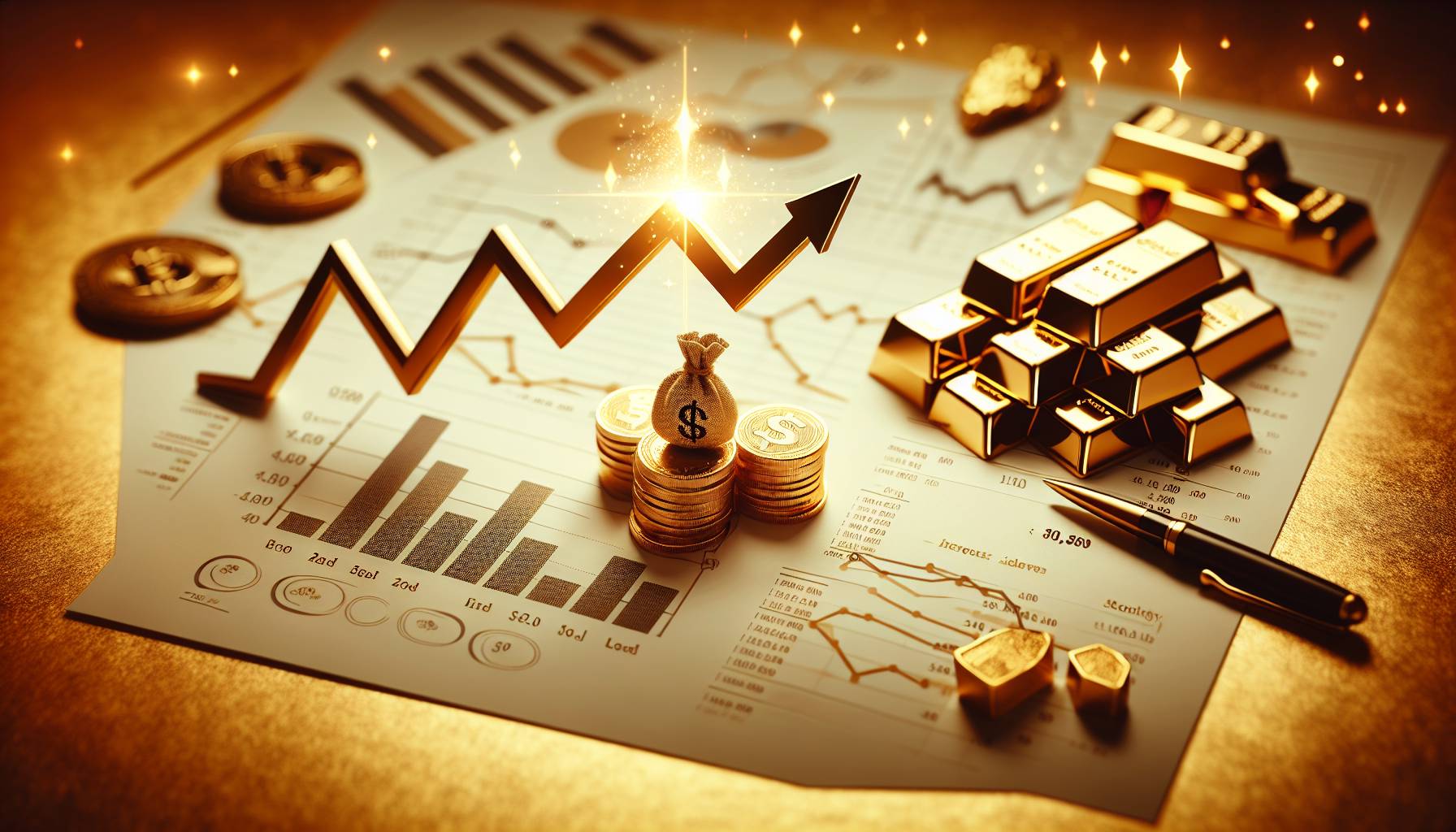Impact of U.S. employment figures on precious metals
The recent release of U.S. employment figures has had a significant impact on the precious metals market. Weak employment data often signals economic uncertainty, prompting investors to seek safer assets. Precious metals, particularly gold, are traditionally viewed as a hedge against economic instability and inflation.
As the U.S. labor market shows signs of slowing, with fewer jobs added than anticipated, investor confidence in the broader economy has been shaken. This has led to increased demand for gold and other precious metals, driving up their prices. The correlation between employment figures and precious metal prices is well-documented, as investors adjust their portfolios in response to perceived economic risks.
In this context, the rise in gold prices can be attributed to a flight to safety by investors looking to protect their wealth amidst uncertain economic conditions. The employment data serves as a critical indicator for market participants, influencing their investment strategies and asset allocations.
Fluctuations in equity markets and their effects
The equity markets have experienced notable fluctuations recently, contributing to the rise in precious metal prices. These fluctuations are often driven by a variety of factors, including geopolitical tensions, changes in monetary policy, and economic data releases. When equity markets become volatile, investors tend to seek refuge in more stable assets, such as precious metals, to mitigate risk.
In the current scenario, the instability in equity markets has been exacerbated by concerns over global economic growth and inflationary pressures. As stock prices swing unpredictably, the appeal of gold and other precious metals as a safe haven increases. This shift in investor sentiment is reflected in the rising prices of these commodities.
Moreover, the relationship between equity markets and precious metals is complex and often inversely correlated. When equities are underperforming or experiencing high volatility, precious metals typically benefit as investors diversify their portfolios to include assets that are perceived as less risky. This dynamic underscores the role of precious metals as a hedge against market uncertainty and economic downturns.
As a result, the recent fluctuations in equity markets have played a significant role in driving up the demand for gold, pushing its prices higher. Investors are closely monitoring these market movements, adjusting their strategies to navigate the current economic landscape effectively.
Gold futures surpass 1 lakh threshold on MCX
The recent surge in gold futures on the Multi Commodity Exchange (MCX) marks a significant milestone, as prices have surpassed the 1 lakh threshold, reaching Rs 1,00,464 per 10 grams. This increase of Rs 710, or 0.71%, highlights the growing demand for gold amidst current economic conditions. The crossing of this psychological barrier is noteworthy, as it reflects both domestic and international factors influencing the market.
Gold’s appeal as a safe-haven asset has been amplified by the prevailing economic uncertainties, prompting investors to allocate more of their portfolios to this precious metal. The MCX, being a prominent platform for trading commodities in India, serves as a barometer for gold’s market performance, and the recent price movement underscores the heightened interest from investors.
Several factors contribute to this upward trend in gold futures. The weakening of the Indian Rupee against the US Dollar has made gold imports more expensive, thereby pushing up domestic prices. Additionally, global economic concerns, including inflationary pressures and geopolitical tensions, have further fueled the demand for gold as a protective asset.
Market analysts suggest that the current trajectory of gold prices on the MCX could continue if the underlying economic conditions persist. Investors are advised to keep a close watch on both domestic and international developments that could impact gold prices, as these factors will play a crucial role in shaping future market trends.
impact of employment data on precious metals
Recent weak U.S. employment figures have significantly influenced the precious metals market, driving up prices as investors seek safe-haven assets. The unexpected downturn in employment data has raised concerns about the economic recovery, prompting a shift in investment strategies.
As equity markets experience fluctuations, the appeal of precious metals like gold has increased. Investors are turning to these assets to hedge against potential market volatility and economic uncertainty. This trend underscores the sensitivity of precious metal prices to macroeconomic indicators, particularly employment statistics.
The correlation between employment data and precious metal prices highlights the importance of monitoring economic reports for investors. As the labor market shows signs of weakness, the demand for gold and other precious metals is likely to remain strong, reflecting their role as a reliable store of value in uncertain times.
gold futures surge past 1 lakh mark
The recent surge in gold futures, surpassing the 1 lakh mark, has captured the attention of investors and market analysts alike. Gold October futures on the Multi Commodity Exchange (MCX) rose by Rs 710, or 0.71%, reaching Rs 1,00,464 per 10 grams. This milestone reflects a growing confidence in gold as a robust investment option amidst economic uncertainties.
Investors are increasingly drawn to gold futures as a strategic move to safeguard their portfolios against market volatility. The breach of the 1 lakh threshold is not just a numerical achievement but a testament to gold’s enduring appeal as a hedge against inflation and currency fluctuations.
Market participants are closely watching these developments, as the rise in gold futures indicates a broader trend of shifting investment preferences. The current economic climate, characterized by fluctuating equity markets and weak employment data, has reinforced the perception of gold as a safe-haven asset.
For Australian investors, this surge presents an opportunity to reassess their investment strategies, considering the potential benefits of incorporating gold into their portfolios. As global economic conditions remain uncertain, the demand for gold is expected to persist, offering a stable and reliable investment avenue.

